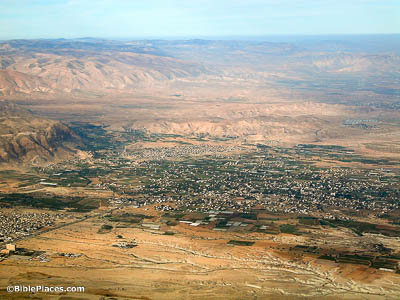Adoni-zedek king of Jerusalem heard how Joshua had taken Ai (Joshua 10:1).
At the time of Joshua, Jerusalem was located on the ridge above the Gihon Spring, shown in the center of this photo. It was only after its capture by David that the city was extended further to the north to include the area now covered by the Temple Mount. The older city, today commonly referred to as the City of David, is completely outside of the modern Old City walls.






